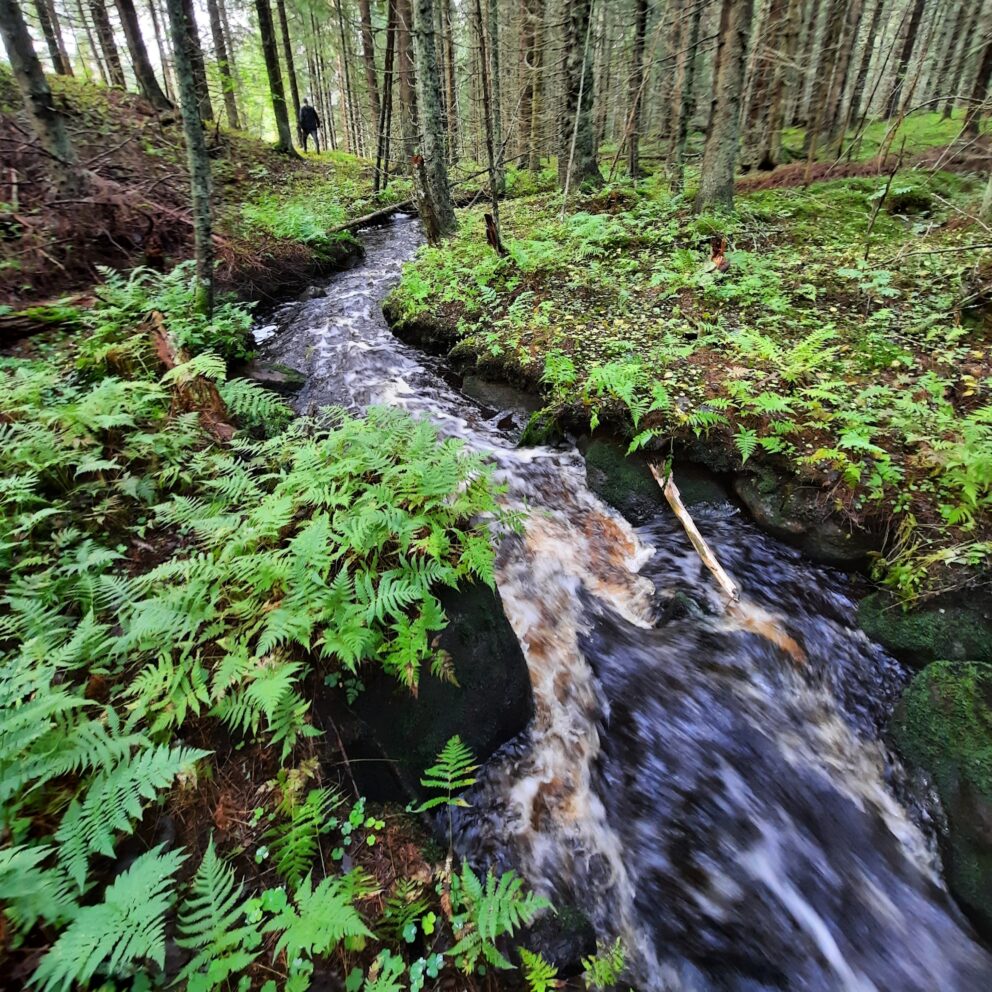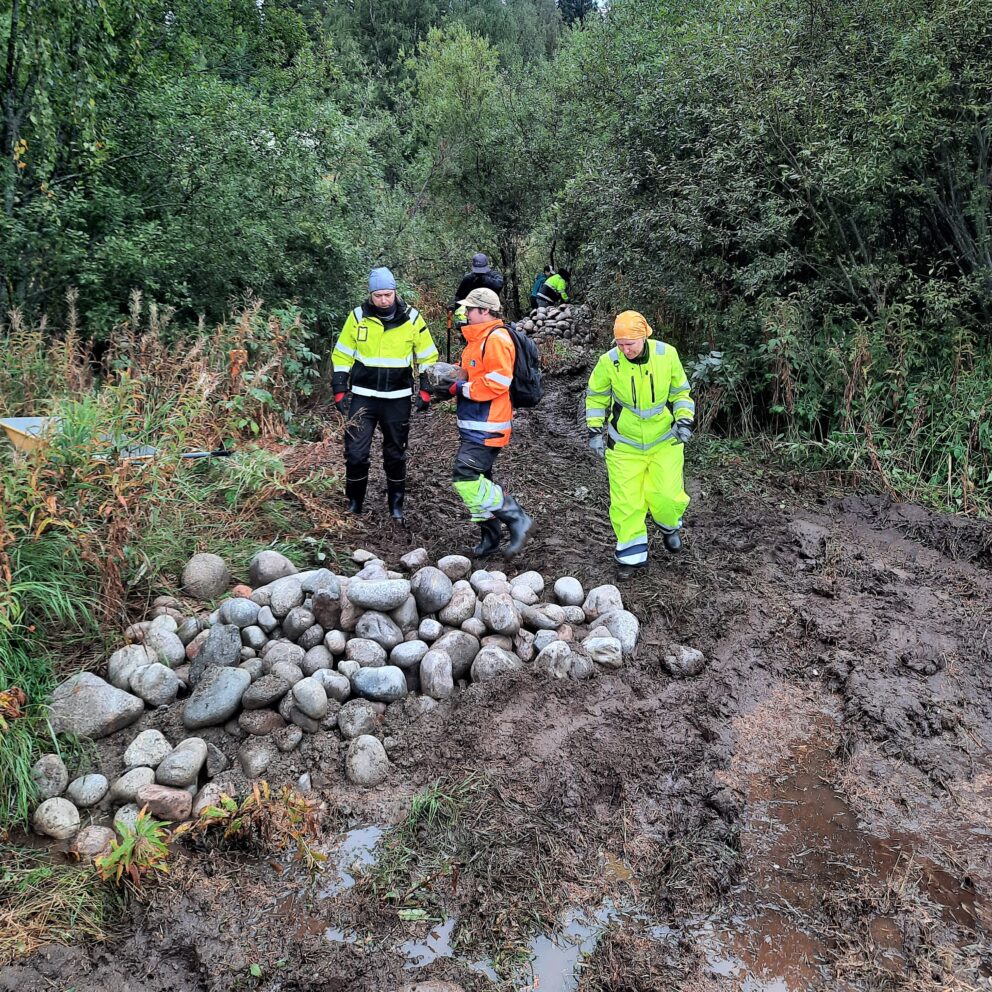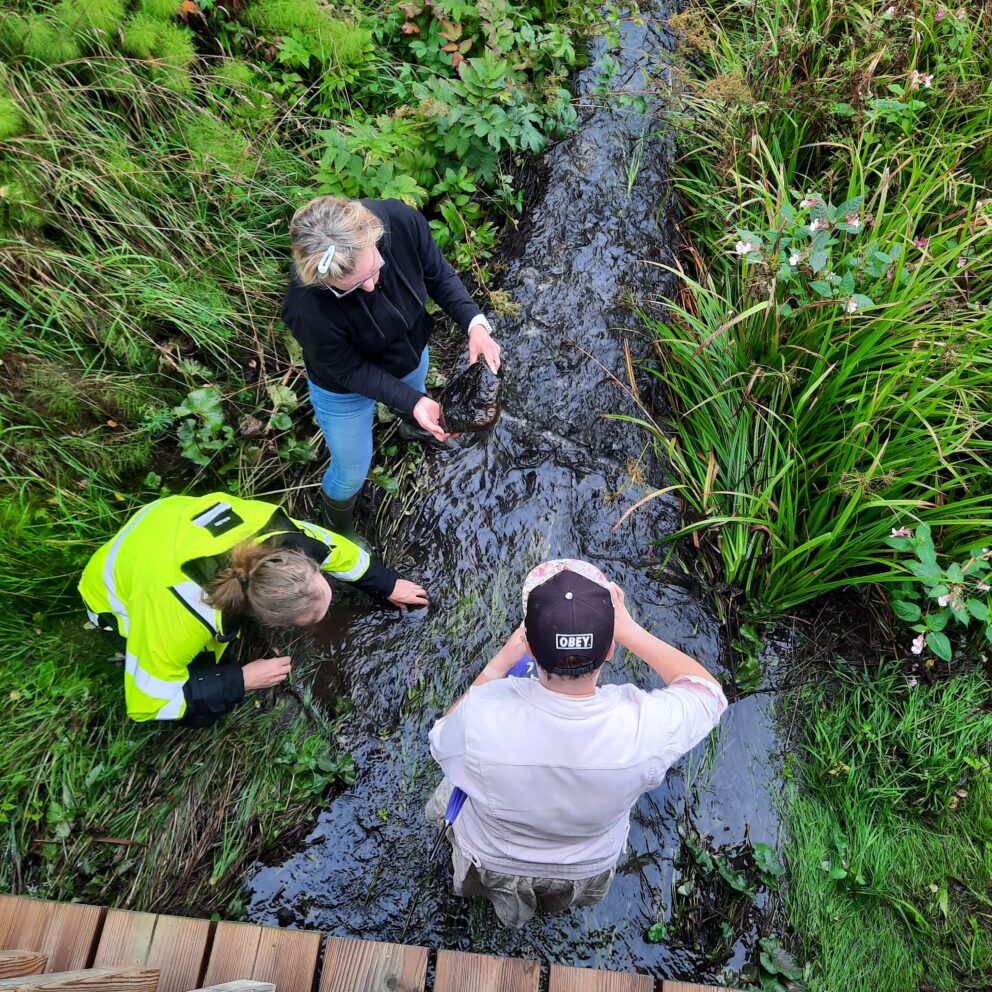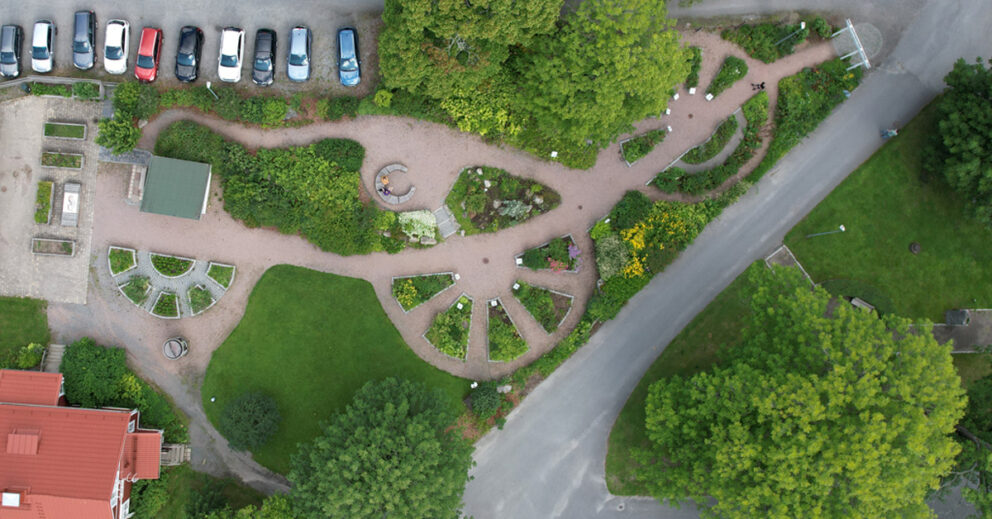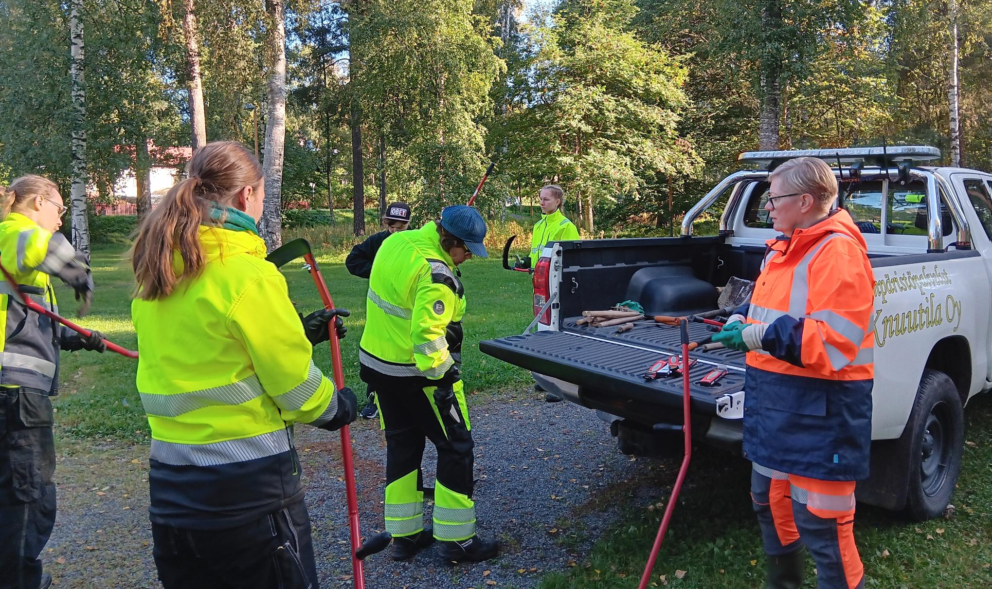In Finland, the AhlmanEdu stream water training taught about stream maintenance and its importance for biodiversity. Here are the seven most important lessons on stream waters.
Stream waters – why do we need to maintain and restore them?
1. Stream waters support biodiversity
Biodiversity must be protected in streams in urban forests. Stormwater is often connected to streams in the built environment, eventually discharging into lakes and seas. The purity of the whole chain is important. A good indicator fish (at least in Finland) is the brown trout, which spawns and lives in cool, shaded, clean and shallow streams. There are very few natural stream waters and they are endangered.
2. Too many stormwater structures are overheated because there is no shade vegetation
If a water body is too warm, trout will not thrive there, the water’s ability to hold oxygen will deteriorate, oxygen will be used up in decomposition, algae will take over the water body. The result is an acid-free state.
3. Many naturally meandering streams are straightened
Straightened stream banks no longer hold back water in flood events, increasing the susceptibility to erosion and causing land masses to move.
4. The condition of the watercourses is studied by observation
In springs and streams, the condition of watercourses can be studied by measuring temperature and examining the bottom of rocks – there’s life there!
5. Many species benefit from clean streams
Such as fish, crabs, water butterflies, birds, otters.
6. The spread of invasive species through water
Invasive species are spread by water, so it is important to remove them from waterways regularly.
7. How to start restoring a stream water?
It is easy to start restoration by erosion control, supporting the banks of the stream with natural stones so that in the event of flooding, solids do not move and accumulate in a wrong area, vegetation is preserved and the water remains clear. Creating natural bends and lacustrine ponding areas will delay water more.
